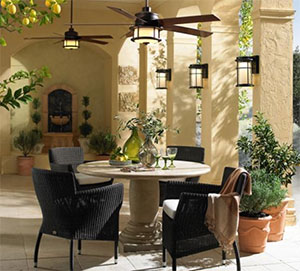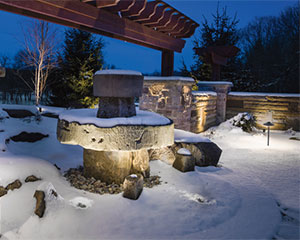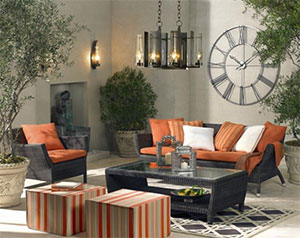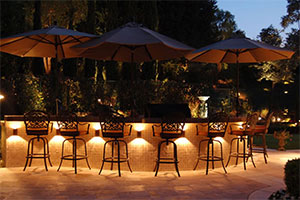How to Plan Your Landscape Lighting
By Lauren Busser The House Designers’ Editorial Director
It’s no secret that lighting is just as important indoors as it is outdoors. While you don’t need as much lighting outdoors, appropriately placed lighting can help improve your safety and show off your yard and garden. While lighting is important and can enhance the quality and look of your outdoor space, outdoor lighting is also a very different project than designing your indoor lighting. While basic principles remain the same there are significant differences and concerns that need to be addressed. Here are some tips for designing outdoor lighting that perfectly accents your space.
Back to Basics
When you are planning your outdoor lighting design, take a moment and walk around your yard, walkway, or patio, and envision how and when you want to use your spaces. Remember, the way you see light during the day is different than the way you see it at night. However, the basic principles of lighting remain true. There are three types of lighting to consider in your design: overall to provide illumination for a whole room or space, task lighting to use for a specific purpose, and accent lighting that draws attention to an object or area. These layers are important to keep in mind as they will dictate where attention is drawn in your design.
Lighting the Outdoors
There are different issues to consider when you light an outdoor space as opposed to an indoor space. One of the big differences is the lack of reflection. Outdoor spaces and surfaces are often dark and do not reflect light well. At the same time, positioning and shielding are more important in order to prevent glare. Glares occur when a light is too big or too bright and can be irritating if it shines directly into people’s eyes.
For this reason it is also important to look at direct and indirect lighting. Direct lighting, such as a downward light, will illuminate the object it is directed at and little of the surroundings. Indirect lighting will reflect on the surrounding surfaces creating a soft wash.
Place Your Lights
There are a few spots that every outdoor lighting design should feature prominently in. These zones include paths, entries, driveways, steps, decks and patios, gazebos and trellises, and architectural features. Depending on what your outdoor living space looks like you can decide on appropriate lighting that will perfectly accent your space. There are a range of light fixtures to suit your needs including wall fixtures, sconces, portable lamps, chandeliers, ceiling fans, and even underwater pool lights. When you are selecting your fixtures just make sure they are rated for use in a wet location.
Avoid Light Pollution
Unwanted light pollution is caused by too much or poorly installed lighting. The light pours into indoor rooms, washes out the view of the stars, and creates glare that can be irritating. Additionally, light pollution wastes energy and dollars. The best way to avoid light pollution is to aim lights carefully, shield your bulbs to concentrate light, minimize wattage and modulate lights with dimmers, motion sensors and controls that turn lights on only when needed.
Taking a moment to design your perfect landscape light will not only enhance your home’s outdoor living space and curb appeal but it could also improve security. Follow these guidelines and you will have a lighting design that you will love for years to come that will show off the beautiful details of your home.



.png)
.png)





